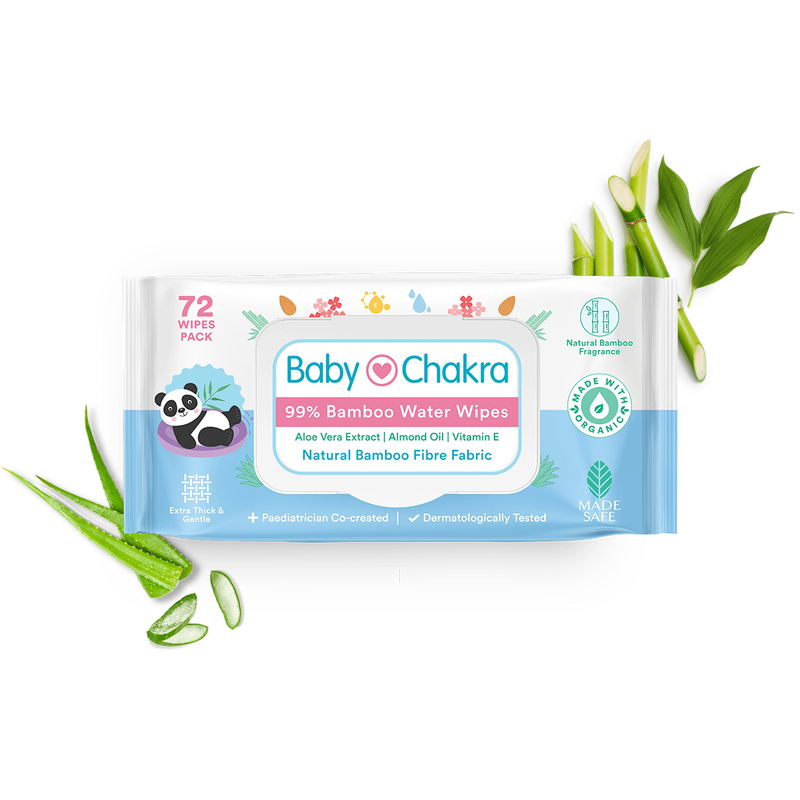
10 Easy And Fun Deep Breathing Exercises For Kids To Enhance Their Health
24 May 2023 | 8 min Read
Sudeshna Chakravarti
Author | 799 Articles
Like adults, it’s common for kids to find themselves struggling against big emotions, such as anxiety, anger, and frustration. Whether it’s a tiff with their siblings, or not being allowed to have ice cream before dinner, feelings of stress and agitation can bubble up in your little one’s mind and cause sudden temper tantrums and outbursts.
One way to help your child cope with their emotions is by teaching them methods to calm their stressful thoughts. For instance, breathing exercises for kids are one of the fail-proof strategies to relax your kid and help them deal with their difficult feelings and emotions.
Read on as we discuss more about the different deep breathing exercises for kids and how they can help in managing your child’s anger and stress.
Importance Of Breathing Exercises For Kids
If you have tried mindful activities like meditation before, then you already know the power that deep breathing exercises hold in enhancing your overall health and well-being. For kids, these exercises calm their feelings and divert their minds from the things that are making them angry, upset, or frustrated.
Additionally, deep breathing exercises offer the following benefits to your little ones.
- It relaxes their muscles
- It increases their energy levels
- It reduces anxiety and the feeling of overwhelmedness
- It lowers stress levels
- It improves their sleep cycle
- It boosts their immunity
10 Easy And Fun Deep Breathing Exercises For Kids

These breathing exercises will help your child process their emotions in a healthy and mindful manner / Image credit: Freepik
When it comes to deep breathing exercises, the key is to make them fun and easy to remember so that your little one can practice them when things go topsy-turvy or even when you are not around.
Also, avoid introducing your kids to these exercises in an emotionally charged situation. Instead, teach them these exercises during calm moments, when your kid is more receptive to information and is willing to practice along with you. This way you can equip them ahead of time to handle stressful situations.
Let’s look at some easy and fun breathing exercises that your little ones can practice.
Smelling Flowers
For this deep breathing exercise, encourage your kid to imagine that they are smelling a flower and tell them to inhale deeply through their nose and exhale out through their mouth. This is an easy exercise and also a good starting point to garner your little one’s attention in these activities.
Benefits of this deep breathing exercise for kids:
- Helps calm your little one instantly.
- Diverts your kid’s attention from the things upsetting them.
- The thought of smelling a flower enhances your little one’s mood and makes them happy.
Bunny Breath
Just like a bunny hopping in the garden, ask your child to participate in this exercise, while imitating the animal and taking two quick sniffs through their nose and one big exhale out through their mouth.
This action mimics the sobbing motion and helps your kid breathe through crying, or while going through feelings of sadness, fear, or frustration.
Benefits of this deep breathing exercise for kids:
- It helps your little one process and move past big emotions.
- It can be easily included in your child’s playtime.
- It is beneficial for regulating your kid’s breathing system.
Blowing Bubbles
This exercise is also known as bubble breathing and is beneficial for calming your little one’s mind and body. Ask your little one if they remember how softly they have to blow to make a big bubble while playing with bubble-making toys.
Now, tell them to imitate the action and take a deep breath and blow it out softly through their mouth, as they would do while playing with their bubble toys.
Benefits of this deep breathing exercise for kids:
- It is a great way to get your kid’s attention diverted.
- It enables your little one to release built-up anger and anxiety.
- It helps enhance their mood.
Blow Out Candles

Practice these breathing exercises together with your child to make them more fun and interactive / Image credit: Freepik
A simple exercise, this breathing technique helps your little one focus on their breathing patterns and keeps their mind off the things bothering them. Have your little one blow out candles on a pretend birthday cake while drawing in deep breaths through their mouths and blowing out strongly through their mouths.
Benefits of this deep breathing exercise for kids:
- It helps your little one relax when they are stressed.
- It reduces anxiety and lowers your child’s heart rate.
- If practiced before bedtime, this breathing exercise can improve your little one’s sleep.
Deep Belly Breaths
For this, your little one has to place one hand on their chest and the other on their belly. Once they are comfortable and ready to start, ask them to inhale through their nose for four counts and exhale slowly through their nose (in four counts).
While doing this exercise, encourage your little one to focus on their belly movements and how their chest rises and falls as they inhale and exhale.
Benefits of this deep breathing exercise for kids:
- It improves your child’s muscle function and prevents strain.
- It reduces anxiety and stress.
- It helps maintain healthy blood pressure in your little one.
- It regulates your child’s breathing patterns.
Smell The Flower And Blow Out The Candle
This exercise combines two techniques, blowing out the candles and smelling flowers. Have your little one pretend that they have a flower in one hand and a candle in another.
The first step is to have your child smell the flower while inhaling deeply through their nose and filling their lungs with air, and then ask them to exhale through their mouth and pretend to blow out the candle placed in their other hand.
Benefits of this deep breathing exercise for kids:
- It helps your little one to cool down when they are frustrated or sad.
- It helps your child focus on their breathing and diverts their attention.
- It relaxes your little one’s body.
Bumble Bee Breath
This breathing exercise is commonly known as Bhramari Pranayama and is considered one of the most popular meditation techniques for relaxation.
Have your child sit comfortably in a chair and encourage them to inhale through their nose, while keeping their mouth closed. Next, with their mouth closed, have your little one imitate a humming or buzzing noise, like bees, while exhaling. You can also encourage your little one to cup their hands around their ears to amplify the humming sound.
Benefits of this deep breathing exercise for kids:
- It calms your child’s agitated mind.
- It relaxes your kid’s nervous system.
- It uplifts your little one’s mood and makes them feel refreshed.
Tumble Dryer
For this exercise, have your little one sit in a cross-legged position and have them point their index fingers toward each other, in front of their mouth. Now, ask your child to inhale through their nose and exhale through their mouth, and while doing so, have them swirl their fingers around like a tumble dryer.
Benefits of this deep breathing exercise for kids:
- It calms your little one’s senses.
- It reduces your child’s anxiety and frustration.
- It regulates your little one’s breathing system.
Dragon Flyer Breaths
Have your little one interlace their fingers under their chin and as they inhale, have them raise their elbows as high as they can, around their face and neck. While exhaling, ask your child to lower their elbows and put them under their chin.
Benefits of this deep breathing exercise for kids:
- It helps relieve your child’s anxiety and tension.
- It helps your little one focus on their breathing patterns.
- It calms your little one’s nervous system.
Snake Breath
Have your child pretend that they are a snake and imitate the hissing sound while inhaling through their nose, and exhaling softly through their mouth. Practicing this exercise regularly can relax your child’s mind and stabilise their heart rate, thereby calming their body and mind.
Benefits of this deep breathing exercise for kids:
- It helps your little one self-regulate.
- It serves as a mood enhancer.
- It stimulates your little one’s imagination.
Conclusion
These simple and fun breathing exercises for kids are a great way to encourage your little one in mindful activities and form a healthy way to channel their emotions. They can also enhance your child’s overall health and boost their immune system to keep illnesses at bay.
You can also make these exercises interactive by practicing them together with your little one and supporting them while they process their emotions.
Recommended Child Care Products:
Also Read:
Educational TV shows for toddlers: Support your little one’s early learning with these fun educational shows.
Nursery rhymes for toddlers: These nursery rhymes will help enhance your little one’s speaking skills and expand their vocabulary.
Cover Image Credit: Freepik.com
A


Related Topics for you
Suggestions offered by doctors on BabyChakra are of advisory nature i.e., for educational and informational purposes only. Content posted on, created for, or compiled by BabyChakra is not intended or designed to replace your doctor's independent judgment about any symptom, condition, or the appropriateness or risks of a procedure or treatment for a given person.



